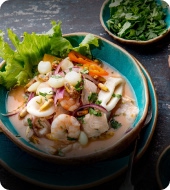
The Vilcabamba trek to Machu Picchu
Written by:Valencia Travel
Last Update: 2025-01-26
Serious trekkers who are looking for a more remote and off-the-beaten-track experience should really consider The Vilcabamba trek to Machu Picchu, on their Peru trip. This trek is perfect for trekkers looking for a varied and challenging trek, and the Vilcabamba Trek offers an authentic experience of high-altitude trekking. The Vilcabamba Trek is a less common trekking route that takes you away from the crowds to some remote high-altitude trails and through gorgeous mountain terrain with spectacular views, through the region where the Inca made their last stand. It takes in some important Inca ruins on the first day before heading high up into the mountains and crossing at least seven passes of over 4,000 m, before descending as we head to the iconic Machu Picchu. Read on for more information about the impressive Vilcabamba region!
Hispana Yuraq, Vilcambamba
History
Vilcabamba was where the Incas retreated to as the threat of Spanish conquistadors loomed over Cusco. Travelers can visit via off-the-beaten-path treks. The area of Vilcabamba was the stronghold and refuge of what is known as the Neo-Inca State before its collapse under the Spanish conquistadors. The state was established by Manco Inca Yupanqui at Vilcabamba, which served as the capital until 1572 when the area was conquered and Manco’s son, Tupac Amaru, was captured and executed. This refuge was abandoned and forgotten, though locals knew of its existence and referred to it as Espiritu Pampa (Plain of Spirits). Hiram Bingham arrived in Peru in July 1911 with the aim of finding Vilcabamba, the Lost City of the Incas. When locals led him to Machu Picchu, Bingham believed the site to be the Lost City he was searching for but it wasn’t until 1964 that Gene Savoy, an American archaeologist, demonstrated that the ruins of Vilcabamba were indeed those of the real Lost City. What’s left to see at the Vilcabamba site may not be as impressive as Machu Picchu, but it is still fascinating considering its history and the fact that it is so remote. Excavations in 2010 revealed items from the Wari culture, meaning the site was inhabited long before the Incas. In 2015, a team of Spanish explorers recently uncovered what appears to be evidence of Capacocha, an Inca sacrificial rite that involved sacrificing children.
Rosaspata Ruins
Trek to Vilcabamba
What makes Vilcabamba so special and off the beaten track, is that it is inaccessible by vehicle. The length of the Vilcabamba trek varies, but the shortest and most popular is 5 days and 4 nights, with the final night at Aguas Calientes and a tour of Machu Picchu the following day. The Cordillera Vilcabamba is a vast mountain chain of striking beauty. It belongs to the longest mountain range in the world - The Andes. Its location is in southern Peru in the regions of Cusco and Junín. It is about 250 km long and is bounded by the deep gorge of the Apurimac River to the southwest, the rivers Tambo-Ene to the northwest, and the Urubamba River to the northeast. Nevado Salkantay is the highest peak of the Cordillera Vilcabamba. It is located in the Cusco Region, about 60 km west-northwest of the city of Cusco. It is the 38th-highest peak in the Andes and the twelfth-highest in Peru.
Vilcabamba Valley
Vitcos Ruins
Vitcos stands on the northern side of the hill, between the modern villages of Huancacalle and Pucyura, and is the principal portion of a complex that covers the entire hill and portions of the valleys to the south and east. South of the hill there is Chuqip’allta, a giant carved stone said to have been an Inca oracle, and a series of terraces that stretch along the eastern side of the hill within the valley, which are believed to have been decorative or ceremonial gardens. The palace itself consists of two groups of buildings. The upper group is made up of eight large rooms, arranged in four pairs of two rooms back-to-back, all joined by a common outer wall. To the north of the upper group is a terrace wall, below which is the lower group of buildings. This group is made up of a dozen or more buildings arranged around an open courtyard. The exact number of buildings in this group is unclear, as it is in considerably overgrown condition than the upper group, adding to its fascinating deep jungle environment.
Vitcos Archaeological Site
Bird Watching
The diversity of bird life in the Vilcabamba region attracts ornithologists from all over the world to spot rare birds in their natural environment. Trekking the Vilcabamba trail is quite interesting for its stunning scenery and different micro-climates producing an amazing number of ecosystems such as cloud forests as well as lowland rainforests. The divergence of species makes this destination an ideal place to observe the most fascinating colorful birds of the cloud forest and tropical lowland forest, while you explore the ruins you can easily spot one of these amazing species such as the Cock of the Rock, oropendolas, or woodpeckers. The main trail that accesses the archaeological site, is recommended during the morning time if you want to spot rare species such as the Slaty Gnat-eater and other elusive birds.
Cock of The Rock on The Vilcabamba Trail
Find out more about this awe-inspiring trek to the remote part of the Inca empire and go back in time to the last resting place of The Incas before visiting Peru´s stunning signature sight of Machu Picchu, all on one trek! Find out more about our Vilcabamba trek to Machu Picchu here.
 Aventure
Aventure
 Cultural
Cultural
 Gastronomy
Gastronomy
 Wellness
Wellness
 Local Living
Local Living
 Luxury
Luxury













